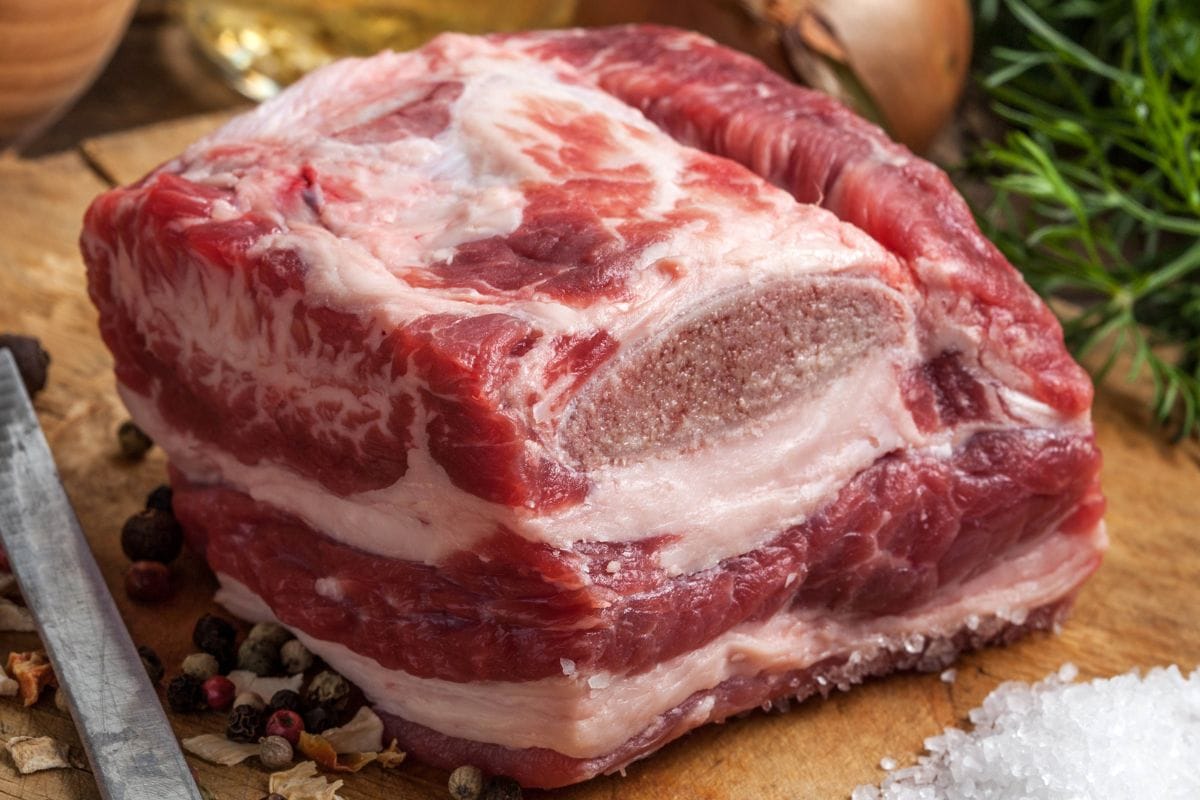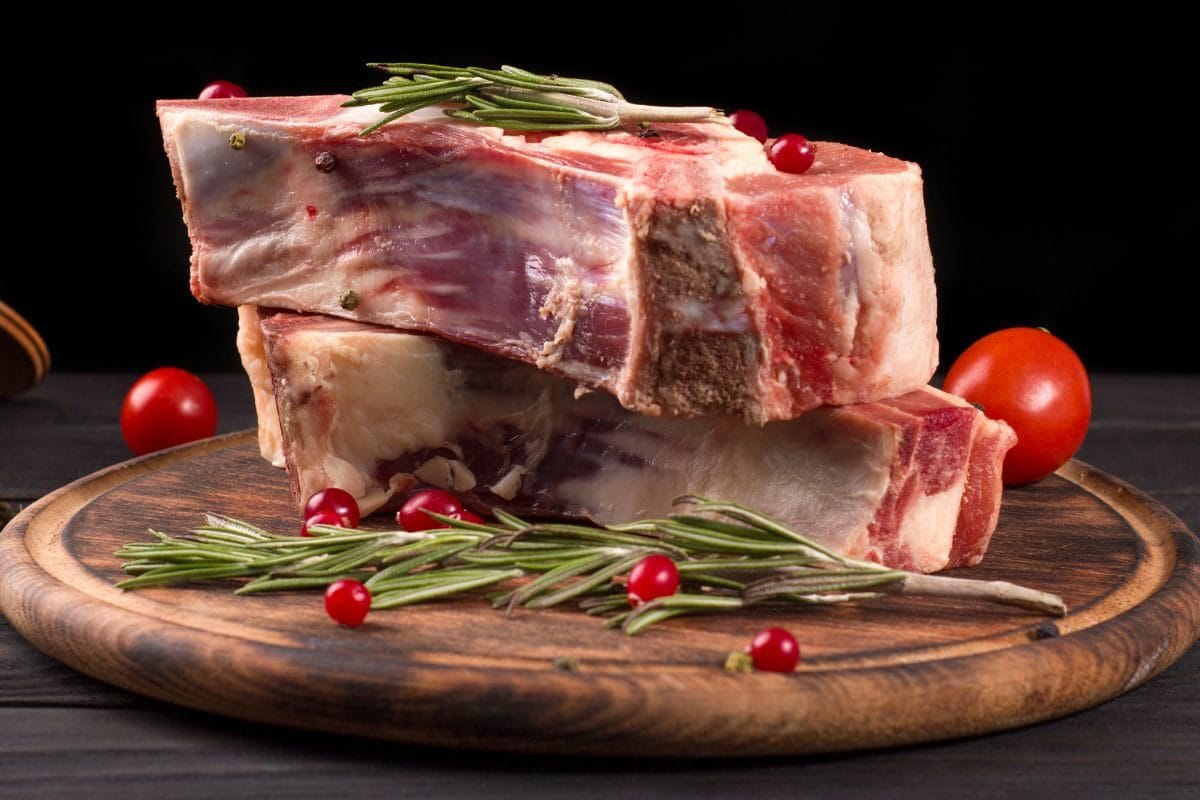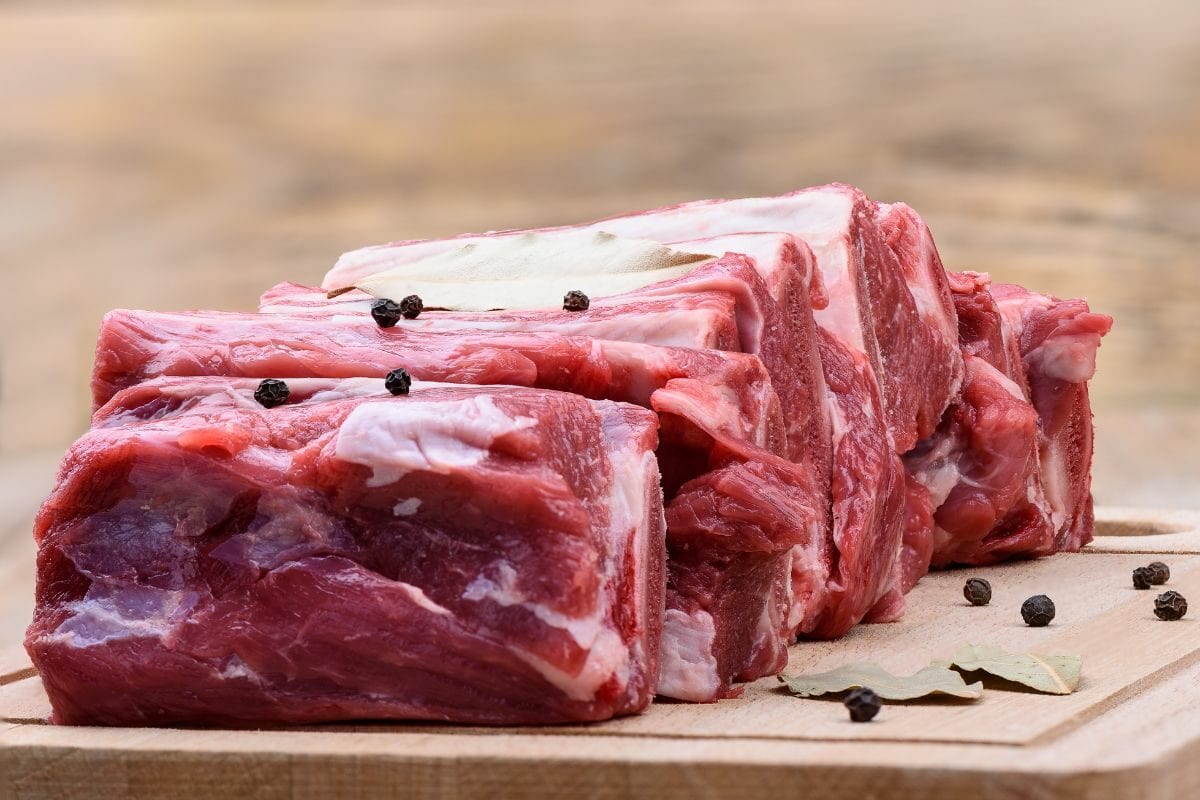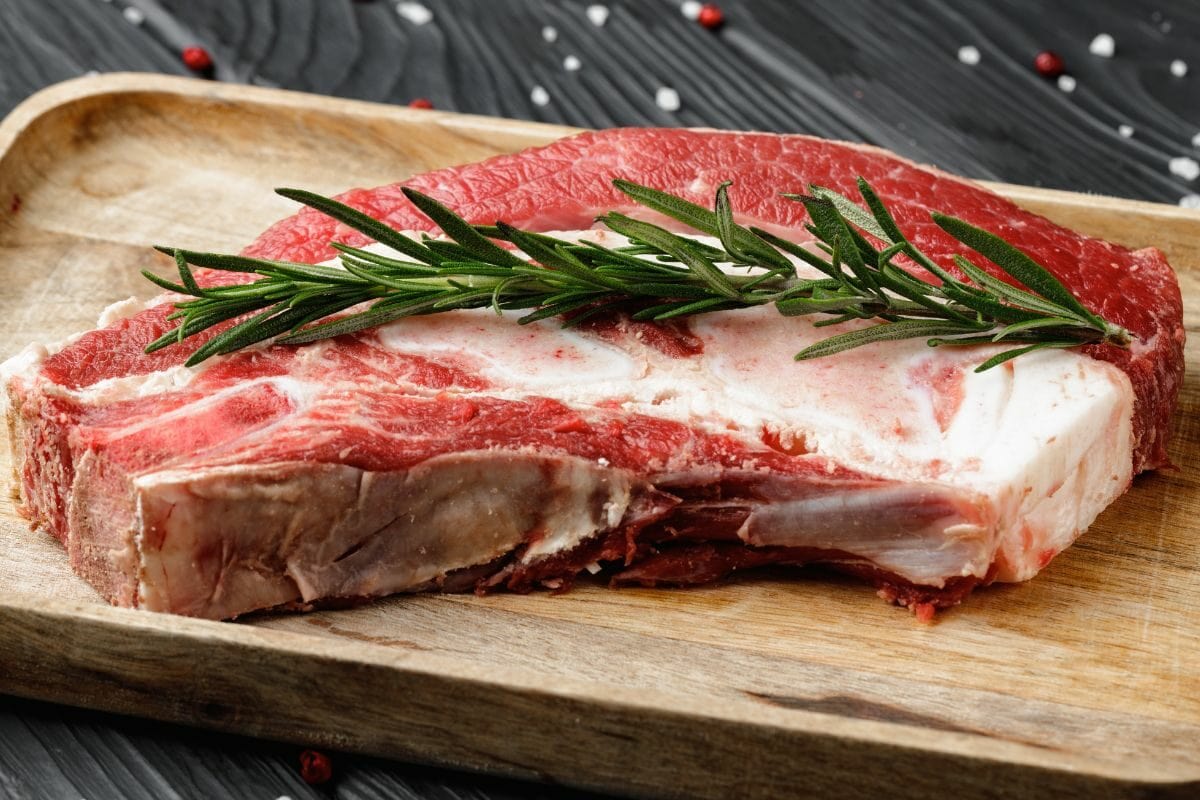My step-by-step approach to trimming brisket for a backyard bbq starts from the flabby mohawk, right along its edge towards the flat, and from the flat back to the point again: a full 360 degrees before we flip it and trim its underside. This method differs slightly when trimming brisket for a restaurant and trimming brisket for competition.
As an experienced pitmaster who started as a prep cook, I have trimmed my fair share of beef briskets. The trick is to move systematically from one section to the other and only flip the brisket the cut once you are done trimming one side. This way, you achieve a more finished look.
This article will take you through the best way to trim your brisket from point to flat, and from the fat side to the meat side. I will also tell you what to do with those fatty trimmings to make the most of your buck. Shall we?

First and foremost, make sure you are working with a cold brisket because the fat will be firm and easy to slice off. Fresh brisket is much harder to handle because the fat is stickier and will adhere to your sharp knife as you slice into it. Start by gathering what you need to trim your brisket.
A brisket has 2 sides; the meat side and the fat side. The fat, or top side of the brisket is covered with a lot of hard and soft fat while the meat side is mostly red meat with a few streaks of fat running through it and a chunk of fat that is part of the deckle.
Additionally, the brisket has 2 ends. They are the point end and the flat end. The point is smaller in size and thicker than the flat. It is also richer in fat and has more connective tissue. The flat, also called the ‘lean end’ is the larger part of the brisket. It is longer but thinner with a fat cap on top.
The point and flat are essentially two muscles with a seam of fat between them. Here are the different parts of a beef brisket:
The slope is the area between the point and flat ends that sits on the deckle and it slopes from the thick part of your brisket and the thinner part.
This refers to the thin flap of meat and fat located on the point end of your brisket. It looks a lot like a mohawk when you hold it up thus the name.
The hump is a thick piece of fat on the point and it sits right beside the mohawk.
This is the thick layer of fat that stands between the flat and point muscles. It is present on both sides of the brisket.
Some grillers cut the mohawk off while others prefer to keep it.
If you plan to cook your trimmed brisket whole, I recommend cutting off this flap of meat because it will not cook at the same rate as the rest of the brisket.
With your sharp knife, hold up the mohawk and start trimming along the base of the flap. Finish this step by rounding off the point such that it naturally curves towards the meatier side of your brisket.
With the mohawk out, you can clearly see the depth of meat and fat along the edge. Trim half an inch into this edge to get rid of any browned meat and expose the red meat beneath it.
Now focus on the deckle fat that was under the mohawk. This thick piece of fat does not render while the brisket cooks so it is best to take it out. Slice it out at a 45-degree angle leaving only a quarter inch of fat attached to the meat.
Move on to the side flat corner where the edge that was attached to the mohawk meets the flat portion of the brisket. Cut off the thin meat at a 45-degree angle such that all the meat left is at least an inch thick. Round off this edge to make a smooth curve.

Next up is the hump’s long edge and its side flat corner. They are located directly opposite the mohawk long edge and the mohawk side flat corner.
Trim off an inch into the long edge of the hump to get rid of any browned meat. Now you can see the meat and fat cap beneath it.
Once that is done, carefully trim the side flat corner to give it a smoother corner. That concludes trimming the perimeter of the brisket. Now we can move our focus to the surface of the brisket.
Start trimming the fat on the surface of the meat. It is best to begin on one end and slowly work your way to the opposite end. Starting from the point end, begin slicing off all the hard fat on top.
This fat is harder, whiter, and most of it is located on the extreme end of the point and the hump. Slice off as much of the hard fat as possible taking off thin layers at a time. This will expose the softer fat beneath it. Trim until only a ¼ inch of fat is left on your meat.
Brisket trimming involves a lot of eyeballing since the landscape of the brisket is highly irregular. Some areas will require you to slice just an inch into the fat while some other areas will require you to cut deeper.
If you happen to nick the meat as you trim, don’t panic, just stop and start over. Keep slicing until the surface only has a quarter inch of fat left. This gives brisket a more uniform look.
By the time you are done with this side, you will have trimmed the point fat, hump fat, flat fat, and slope fat.
This step involves trimming the deckle and the silver skin or membrane familiar with this side of the brisket.
Flip your brisket. That huge chunk of dense fat staring back at you is the deckle. Grab your boning or fillet knife and slice this off until you see there meat beneath it.
With that done, slice off any silver skin and streaks of fat until it looks clean and evenly trimmed.
As for a fast brisket recipe usually cooked at a temperature of 275°F or higher, I recommend trimming a bit of the fat seam that connects the flat muscle to the point muscle. This is because this chunk of white fat will not have enough time to fully render.
Lift the flat and cut away at the fat seam joining the two muscles. Shave off as much of the thick fat as you can. Leaving only a quarter inch of fat as you go. This method allows you to cook whole brisket with less fat.
Although this is not commonly done, I definitely recommend reducing this fat because as it melts, it remains trapped inside the brisket. This is too much fat and it usually pours out as soon as you carve your meat. This is especially so for wagyu briskets because they generally have more fat.
Finally, inspect your brisket. It should be even without bits and pieces of meat or fat hanging from it because they will burn as they cook. If there are, trim them away and set them aside. You are now looking at a neatly trimmed brisket ready to be seasoned and smoked.

When it comes to a restaurant brisket trim, the focus is entirely on consistency. Restaurants are likely to have multiple briskets cooking and they all have to be done at around the same time.
Also, chain restaurants prioritize nailing a signature taste and quality attached to their brand. This means every bite of their brisket from any outlet will taste the same and is good enough to sell.
For these reasons they are more aggressive with trimming, taking off more meat and fat than our laid-back backyard brisket trim.
This is by far the most aggressive brisket trimming in the barbecue world and it focuses wholly on the set competition standards.
Brisket trimming for competition usually involves separating the point and flat cuts of the prime briskets before trimming them to the competition standard.
In general, both the burnt ends and the brisket slices have to fit into a 9″ hand-in box.
With the competition trim, a lot of meat and almost all the fat is cut off the brisket. Pitmasters are judged on the final taste of the brisket so yield is not really a concern. This is not the same for a backyard barbecue where we leave more meat on the brisket.
A lot of people say that trimming brisket takes away its flavor, and moisture, thus drying it out. This is untrue. Beef brisket is cut from the belly region of a steer which has a rich marbling indicative of intramuscular fat. Here are some reasons why you should trim your brisket:
Brisket trimming is mainly done to slice away the enormous fat cap on it. This fat is too thick and dense to fully render even after hours of cooking. If you do not trim your brisket, you will end up with too much fat that you will have to carve away after your brisket is cooked.
Pitmasters trim the mohawk to make the top side of the brisket more aerodynamic. Simply put, it gives the brisket a more even shape that allows air to easily flow around it. This helps the brisket to cook evenly.
If you were to leave the mohawk untrimmed, its huge and irregular nature would directly interrupt airflow and leave some sections of your brisket undercooked.
Lastly, it is important to trim your brisket if you plan to use any spices and seasonings.
This is because they can not penetrate the thick dense coat of fat on brisket. Most of it would melt off along with some of the fat as it cooks. At best, only a few bites will be well-seasoned.
Additionally, the huge fat cap inhibits sufficient smoke penetration into the meat fibers so you can forget getting a badass smoke ring with an untrimmed brisket.
Most of the meat trimmings will be browned and hard so toss them out. As for the rest of the trimmings, utilize them in any of the following ways:
Note: Brisket trimmings are high in saturated fats so use them in moderation.
The rule of thumb for almost all brisket recipes is to leave only a quarter inch of fat attached to the brisket.

I find this method of trimming brisket very methodical and easy to follow. It starts with trimming the mohawk followed by its edge.
Next is the deckle that was beneath the flap and the mohawk side flat corner. We then proceed to trim the hump’s long edge and its side flat corner before trimming the surface fat.
Only then do we flip it to trim the deckle penetrating to the underside and the silver skin. The last step should be squaring your brisket.
To take things to the next level, take a few more inches of the fat between the point and the flat without separating them entirely. Remember, practice makes perfect, so with every brisket you trim, you get closer to nailing your technique.